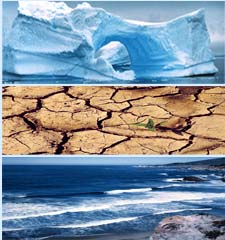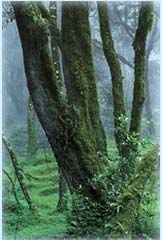










 |
 |
 |
 |
|||||
 |
||||||||
 |
 |
 |
 |
 |
 |
|||
|
|
|
|
|
|
|
|
|
|
|
The Climate Systems Interactions (CSI) group is led by Prof. J. David Neelin of the Department of Atmospheric and Oceanic Sciences and the Institute of Geophysics and Planetary Physics at the University of California, Los Angeles. In studying these interactions, our group specializes in the application of hierarchical climate modeling: building a hierarchy of models of successively less complexity, until the phenomenon has been distilled down to it's essential elements. The more complex models aim to simulate the phenomena, while the simpler models allow theoretical understanding. Many climate research groups make some use of hierarchical modeling; a particular concern of this group is to practice it systematically and attempt to make the derivation of the simpler and intermediate complexity members of the hierarchy as clean as possible.
Acknowledgments: Much of the research described in these pages is supported by federal grants from the National Science Foundation (ATM-0082529), National Aeronautics and Space Administration (NAG5-9358), the National Oceanographic and Atmospheric Administration (CLIVAR-Pacific NA16GP2003, CLIVAR-PACS NA16GP2004), and previous grants from these agencies. NOAA funding includes grants for work on seasonal to interannual climate forecasts. Tropical cloud picture was taken by teacher Jennifer Richard's as part of NOAAs EPIC Teacher at Sea program. Any opinions, findings, and conclusions or recommendations expressed in this material are those of the author(s) and do not necessarily reflect the views of the funding organizations. |
|||
|
Department of Atmospheric and Oceanic Sciences |
Institute of Geophysics and Planetary Physics |
 University of California Los Angeles |
 UCLA Science & Engineering Library |